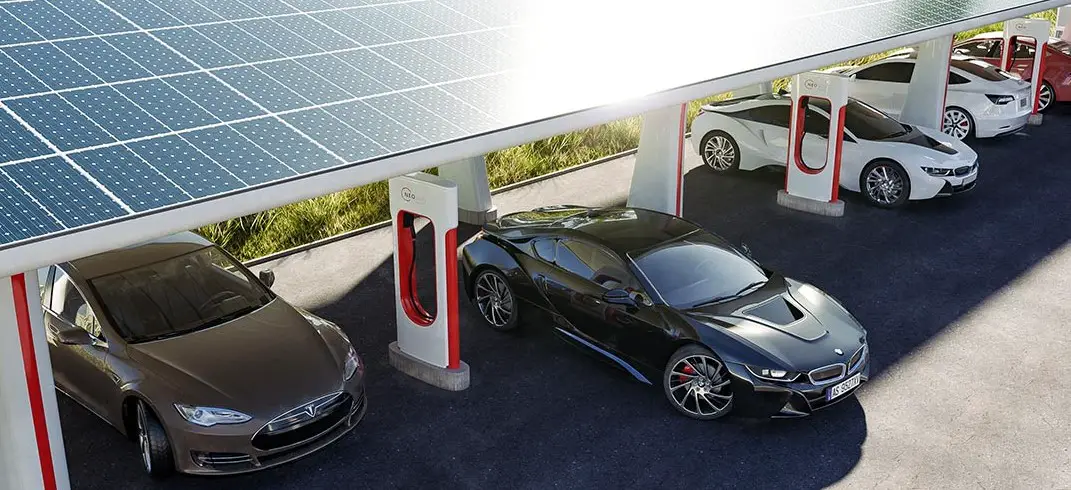As you know, all cars produced by Tesla are powered by electricity. Therefore, you have the option of charging your vehicle with solar energy. More about how many solar panels to charge a Tesla will be discussed in this article.
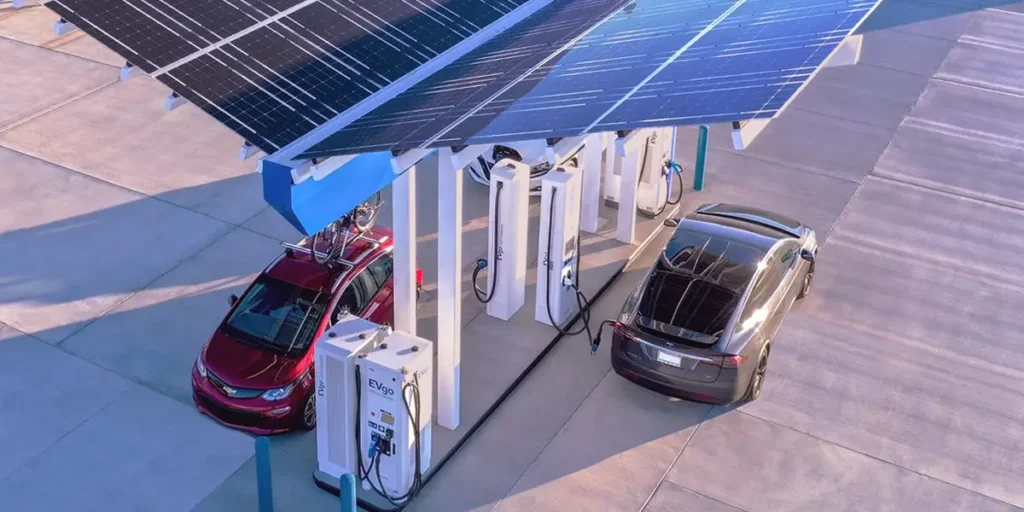
Contents
- 1 Essential information about Tesla batteries
- 2 How many solar panels to charge a Tesla: information about panels
- 3 The required number of panels to charge the car
- 4 Tesla Model charging speed from solar panels
- 5 How much does a solar charging station for electric vehicles cost?
- 6 Number of solar panels for night charging
- 7 FAQ
- 8 Results
Essential information about Tesla batteries
Before proceeding to the question of how many solar panels to charge a Tesla, you should familiarize yourself with the main parameters of the batteries themselves.
Charge level
Batteries show the upper and lower limit of the battery status. Indicators should be in the range of 20-80%. This suggests that the battery can be discharged up to 20%. But it is recommended to charge only up to 80%.
How many panels are necessary for charging Tesla: battery capacity
You need to understand that the battery capacity depends on which model of vehicle you have chosen.
If you select model Y, then the battery capacity will vary from 75 to 81 kWh.
The Tesla Model 3 requires solar panels needed for 50 to 82 kWh.
Model X has a battery capacity of approximately 100 kWh. The S model has the same parameters.
If you consider the battery capacity, then only 90% of the indicated capacity can be used. The manufacturer only indicates the maximum battery efficiency that is expected from the selected model.
Given this, you do not receive the claimed 75 kWh. As soon as recharging starts, the usable capacity drops to 67.5 kWh.
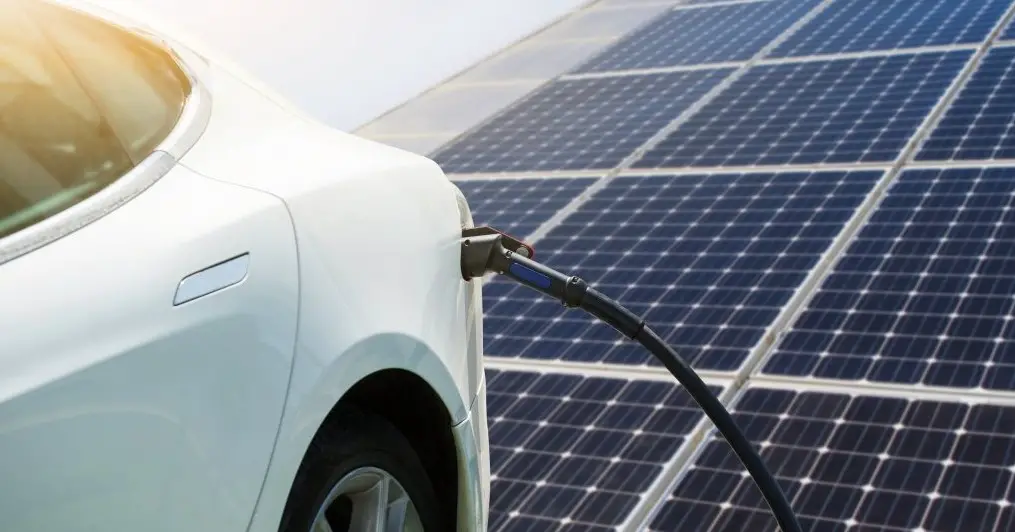
The energy requirement of the machine itself
This setting determines how much solar power is required to charge the battery successfully.
It depends on the state of charge as well as usable capacity. The calculations are quite simple. Multiply the state-of-charge parameters by the battery capacity.
When making calculations, you should take into account the charging efficiency and the requirements for the degree of charge.
If the nominal capacity of the battery is 100 kWh, then in fact it is 90 kWh. The battery requirement is 60% (80%-20%). Tesla Model X requires 54 kWh to charge.
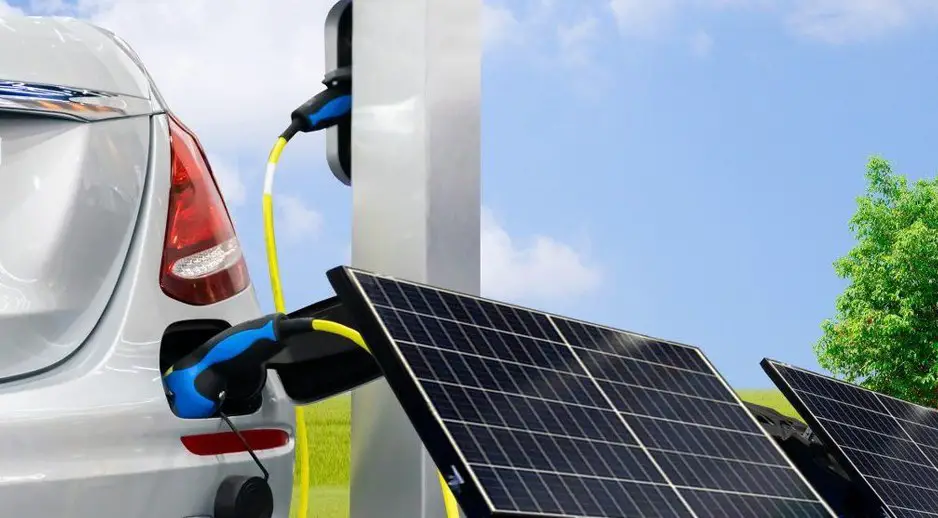
How many solar panels to charge a Tesla: information about panels
Now you can start calculating the required number of panels to charge the battery at home. However, you first need to study the basic parameters of the Tesla battery, which will be discussed later.
Solar battery rating
The measurement is in watts. Indicators can vary from 200 to 400 watts.
If you stop at the best option, then it gives out 400 watt-hours. In just 1 hour, solar energy is converted into electricity.
Solar panel efficiency
This parameter determines how well the solar energy is converted. Often this is influenced by several factors, including inherent inefficiency and the environment.
The first parameter depends on thermodynamic processes. After all, they limit the effectiveness of the panels.
Almost all solar panels convert no more than a quarter of solar energy into electrical energy.
The quality of the solar battery is also affected by the environment.
Dust, the presence or absence of clouds, the presence of obstacles in the form of buildings or trees, as well as coolness or precipitation must be taken into account.
Solar inverter
Despite the safety of solar energy, you can add an inverter to your project. It is engaged in the regulation of the current and voltage that comes from the solar panel to charge the electric vehicle.
If you do not use inverters, the charger, and the house will experience power surges. Because of this, trouble can happen. However, inverters also have disadvantages. It operates at only 97% of its rated power.
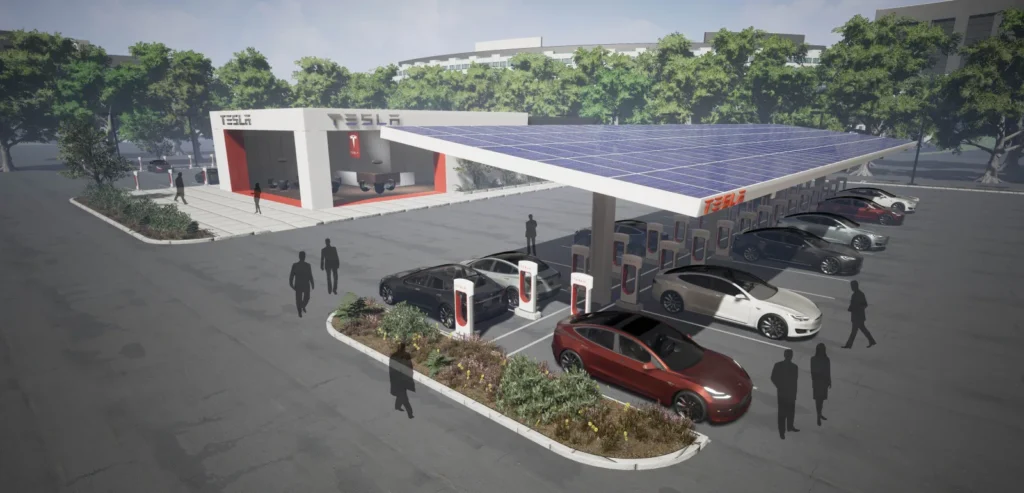
The required number of panels to charge the car
To charge a vehicle with solar energy, you need 8-12 solar panels.
Parameters for calculations
Accurate calculations depend on many parameters, including:
- the amount of energy required for charging;
- rating of solar panels;
- efficiency;
- the amount of falling sunlight;
- daily mileage of the vehicle.
Next, indicators are written using the example of model X. As already mentioned, for a car to charge, it needs energy in the amount of 54 kW/h.
Therefore, it should be determined in advance whether the panels are powerful enough to generate enough energy to recharge the vehicle.
You can take 6 solar panels, the solar power of which is 250 watts. It is allowed to reduce inefficiencies up to 75% from the environment and 97% from the solar inverter. It can also be assumed that in the region, the sun shines actively for about 6 hours a day.
Once all the parameters are taken into account, you can proceed to the calculation of the generation of six solar panels.
Their power is 1.5 kW. The next thing to consider is inefficiency. To do this, 1.5 kW must be multiplied by 0.75 (environmental inefficiency) and 0.97 (inverter inefficiency). The value is 1.09 kW. It can be rounded up to 1 kW.
Given that the sun shines for about 6 hours, then 6 solar panels can provide you with 6 kWh per day. To charge the Tesla Model X, you need to install 54 solar panels with a power of 250 watts.
However, the calculation excludes the factor of how much mileage you provide during the day. On average, people drive about 30 miles every day. Tesla Model X can drive 10,950 miles annually. At the same time, electric vehicles consume 20.8 kWh for every 62 miles.
Calculation of daily consumption
To calculate the daily energy consumption, you need to use a special formula.
It is necessary to divide the consumed energy by the mileage, and then multiply the resulting value by the product of the annual mileage and the number of days in the year. This means that the car will consume about 10 kWh every day.
If the sun in your area shines for about 6 hours, and the derating factor is 0.7, then you can calculate the required DC power.
You need a solar panel system that produces a peak power of 2380 watts.
Once you determine how much energy you can get from the solar panel system, you can begin to calculate the required number of solar panels.
If the panels are rated at 250W, then 9.5 panels are required to charge the vehicle. You can round the value up to 10 bars.
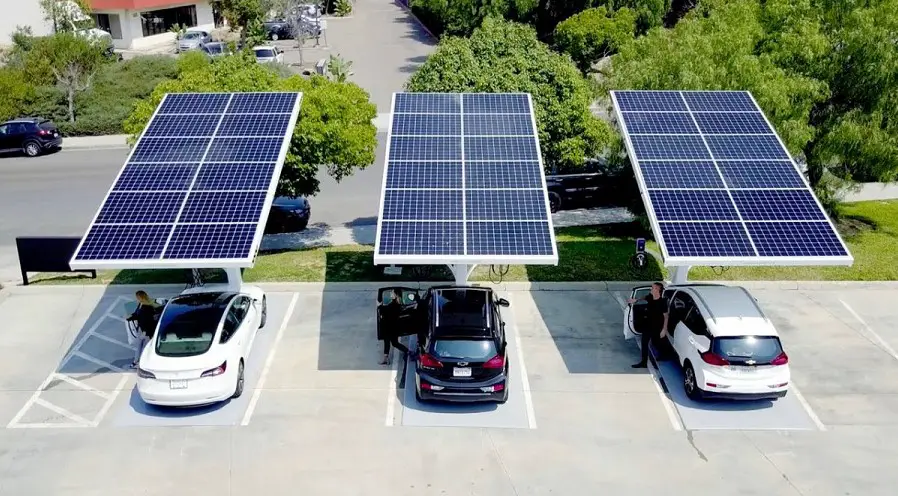
Tesla Model charging speed from solar panels
If you use a special solar inverter in your home system, then the entire system will work perfectly.
Therefore, it takes about 8 hours to charge the vehicle at maximum solar power. However, this is achieved on the condition that the size of the array of solar panels is selected according to all the rules.
If you use a home charger, it takes 24 hours to charge the Tesla car.
When choosing solar panels, try to pay attention to the size of the individual panels as well as the intensity of the sun in your area.
The performance of a solar system depends on several factors, and it is important to take solar radiation into account.
On average, the state of Texas experiences 1,552 peak hours of sunshine each year. This suggests that each day, the sun is at its most active around 4.25 hours.
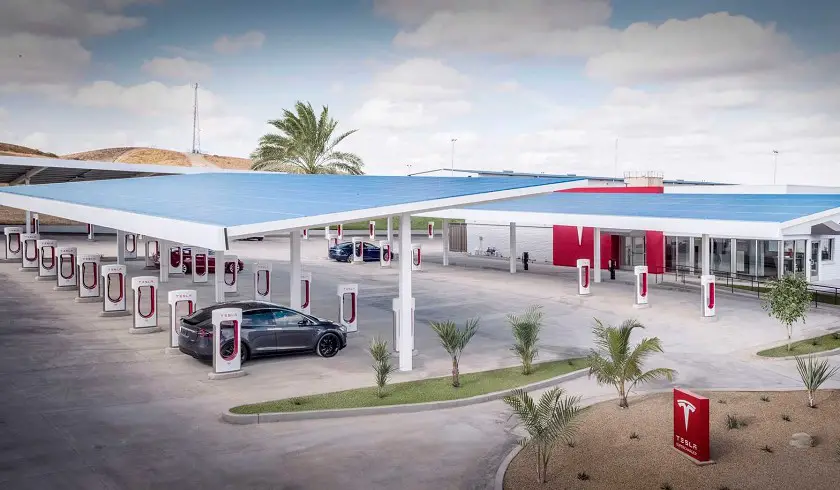
How much does a solar charging station for electric vehicles cost?
Quite often, people are trying to figure out how much it costs to install a solar charging station.
You need to understand that it all depends on the parts used. However, further calculations will be given for systems that are in the greatest demand.
- The array of solar panels will cost $11,000.
- The inverter costs $5000.
- The charge controller costs about $500.
Additionally, you need to pay extra for wires and cables – about $300. Therefore, in general, you will have to pay about $17,000 for the system.
Number of solar panels for night charging
The solar panel does not tend to accumulate electricity. If you wish to charge your electric vehicle at night, a battery pack is required. Energy storage calculations depend on battery discharge. For a Tesla Model S to travel 60 miles, it needs 11 kWh.
An energy of about 1375 Ah is required.
After this, the indicator needs to be divided by the energy of the batteries, which is 200 A/h.
It turns out that you require about 7 batteries. Batteries cost $3,000.

FAQ
When it comes to charging Tesla, users face numerous questions.
How many solar panels does it take to charge a Tesla Model 3?
To charge a vehicle, you require 5 solar panels. This is enough to drive the car another 40 miles. If you require a large power reserve, you should prepare more batteries.
Can you charge a Tesla car with solar panels?
Yes, you can charge a Tesla with solar panels. There is a solar battery to charge a Tesla with solar panels, which will help to save a lot in the future.
How long would it take a solar panel to charge a Tesla?
If you charge the electric vehicle with a solar panel, the process takes 8-10 hours. However, exact readings may vary depending on the Tesla model, sunlight intensity, energy output, and other parameters.
How many solar panels does it take to charge an electric car?
To charge an electric car, you need 5-12 solar panels. Everything also depends on many factors, which were discussed earlier.
Results
As you can see, calculating how many solar panels can charge a Tesla car is quite simple. You need to understand that the parameters depend on the car itself, as well as where you live.
Read About How Long Does It Take A Solar Panel To Charge A Tesla?

